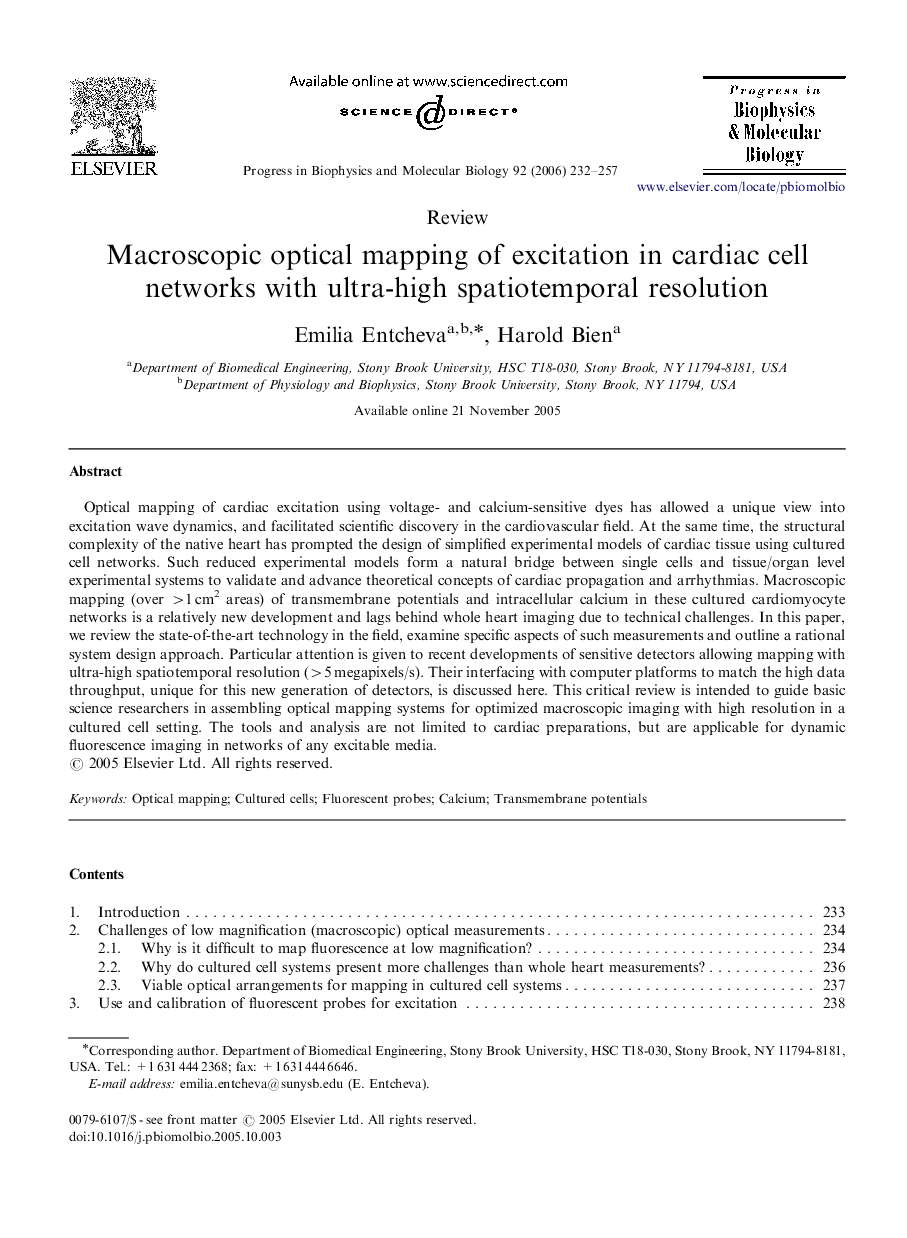| Article ID | Journal | Published Year | Pages | File Type |
|---|---|---|---|---|
| 2070516 | Progress in Biophysics and Molecular Biology | 2006 | 26 Pages |
Optical mapping of cardiac excitation using voltage- and calcium-sensitive dyes has allowed a unique view into excitation wave dynamics, and facilitated scientific discovery in the cardiovascular field. At the same time, the structural complexity of the native heart has prompted the design of simplified experimental models of cardiac tissue using cultured cell networks. Such reduced experimental models form a natural bridge between single cells and tissue/organ level experimental systems to validate and advance theoretical concepts of cardiac propagation and arrhythmias. Macroscopic mapping (over >1 cm2 areas) of transmembrane potentials and intracellular calcium in these cultured cardiomyocyte networks is a relatively new development and lags behind whole heart imaging due to technical challenges. In this paper, we review the state-of-the-art technology in the field, examine specific aspects of such measurements and outline a rational system design approach. Particular attention is given to recent developments of sensitive detectors allowing mapping with ultra-high spatiotemporal resolution (>5 megapixels/s). Their interfacing with computer platforms to match the high data throughput, unique for this new generation of detectors, is discussed here. This critical review is intended to guide basic science researchers in assembling optical mapping systems for optimized macroscopic imaging with high resolution in a cultured cell setting. The tools and analysis are not limited to cardiac preparations, but are applicable for dynamic fluorescence imaging in networks of any excitable media.
